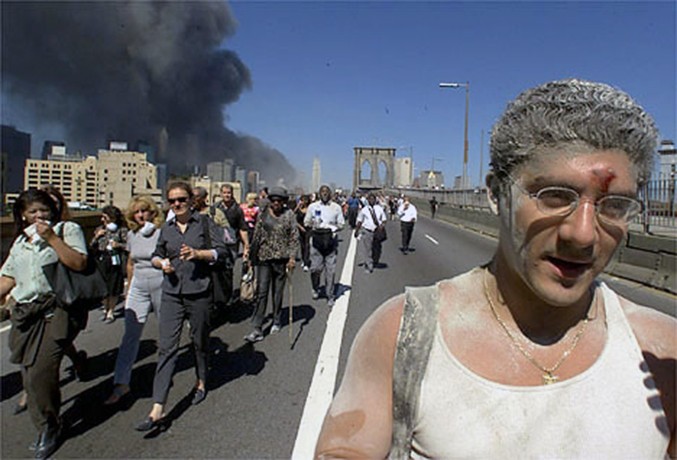‘No Second Chance’ When Big Story Comes Along
Allison Payne, Chicago Anchor, Dies at 57
Bill Church, Japanese American, Named in Raleigh
Ida B. Wells Society Aims to Boost J-Pipeline
Slow Progress on Broadcast Ownership
DuJuan McCoy Expands Reach of Indy TV Station
Death of Michael K. Williams Inspires Tributes
Taliban Violently Attacking Journalists
Nominate a J-Educator Who Promotes Diversity
Short Takes: bilingual Hurricane Ida reports; R. Kelly; Neal Scarbrough; Lulu Garcia-Navarro; Morgan State’s David Wilson; Latin American autocracies; racist comment by Spain sports commentator; Kenyan disinformation for hire; Journal-isms position.
Homepage photo: People flee across the Brooklyn Bridge from Lower Manhattan on Sept. 11, 2001, part of a winning Pulitzer Prize package from The New York Times. (Credit: Andrea Mohin/New York Times)
Support Journal-isms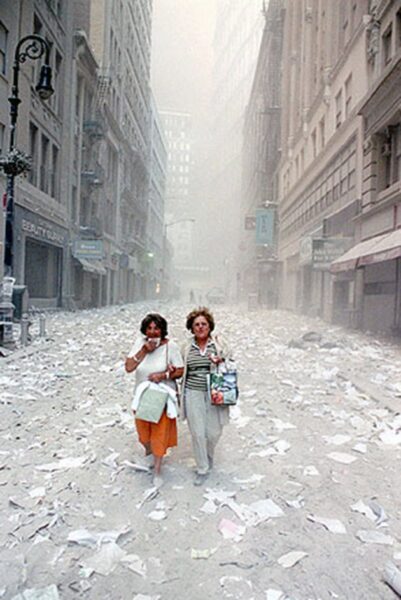
‘No Second Chance’ When Big Story Comes Along
For all the historical significance of the terrorist attacks of Sept. 11, 2001 — 20 years ago — the day was also one in which Black journalists were tested as never before.
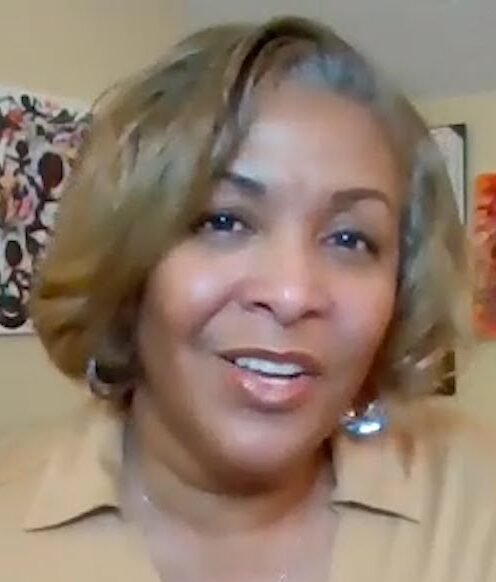 Sonya Ross (pictured) was covering President George W. Bush for the Associated Press on what was supposed to be a quiet day.
Sonya Ross (pictured) was covering President George W. Bush for the Associated Press on what was supposed to be a quiet day.
“I said — and no offense to anyone — but the hell if anybody’s going to knock me out of this story while I’m doing it, and I am not about to become a cautionary tale of why you don’t let Black people do things,” Ross told a Zoom forum this week at Howard University (video). “And I certainly am not going to operate in any way that would give anyone in this industry the belief that another Black girl couldn’t come behind me and do this same thing.”
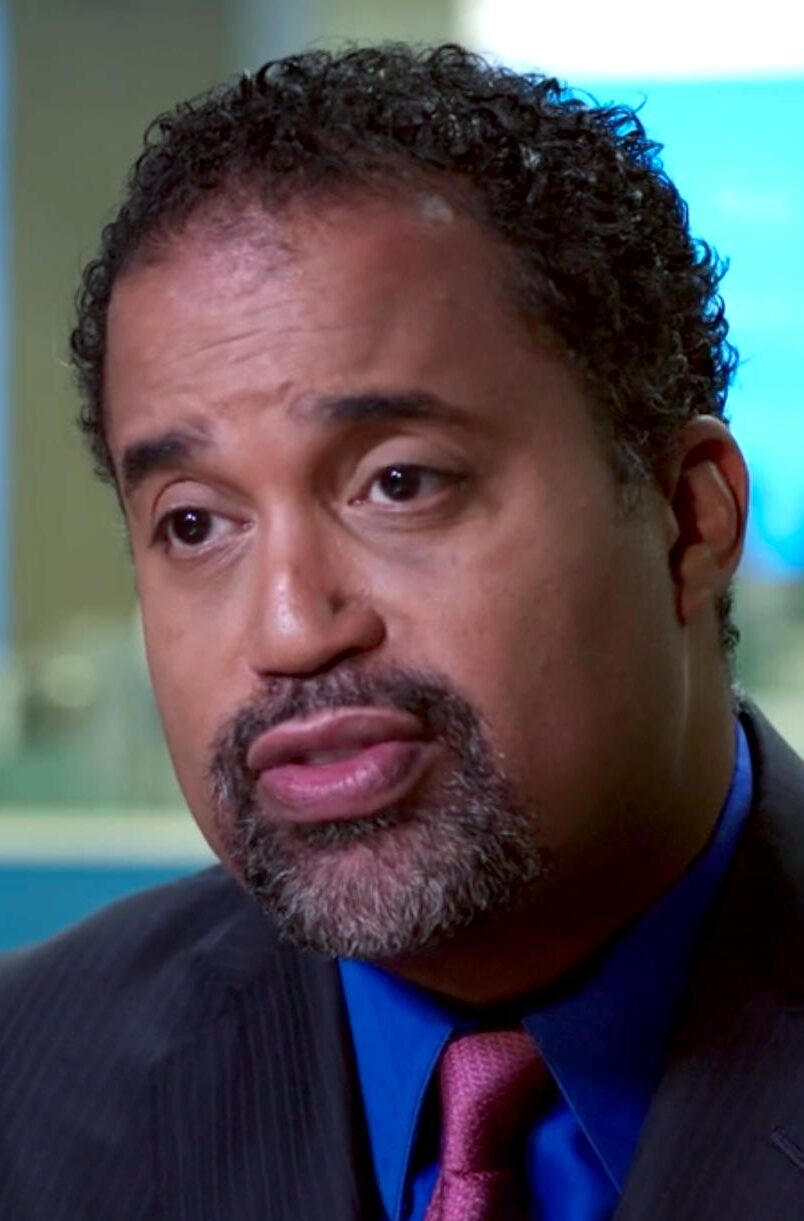 Keith L. Alexander (pictured) was at the Washington Post, chosen to help anchor its coverage because of his expertise on the aviation beat. “I’ve been in the newsroom since I was 16 years old, and when big news happens, the editors often don’t pick journalists to cover them who look like me . . . and I was very accustomed to that, not being picked to cover the big story . . .,” Alexander said. “Unfortunately, in those big stories, in those clutch situations, you only get one shot. You only get one shot to prove yourself, or one shot to fail. And unfortunately, editors have a long memory. And when a big story happens, you have to show up. and you’ve got to show out. Because, unfortunately, they won’t see you again if you don’t.
Keith L. Alexander (pictured) was at the Washington Post, chosen to help anchor its coverage because of his expertise on the aviation beat. “I’ve been in the newsroom since I was 16 years old, and when big news happens, the editors often don’t pick journalists to cover them who look like me . . . and I was very accustomed to that, not being picked to cover the big story . . .,” Alexander said. “Unfortunately, in those big stories, in those clutch situations, you only get one shot. You only get one shot to prove yourself, or one shot to fail. And unfortunately, editors have a long memory. And when a big story happens, you have to show up. and you’ve got to show out. Because, unfortunately, they won’t see you again if you don’t.
“I remember Vanessa Williams, who is a colleague of mine . . . she was in the newsroom, over in Metro, and she sent me an email that said, ‘Thank You,’ in the subject line. And I didn’t know what she was talking about, and so I said, ‘What do you mean, thank you?’ And she responded, you really are the only black journalist here at the Post who is anchoring and leading the coverage, and so thank you for that.
“I didn’t recognize it really; I was in that mode of cranking and cranking and cranking, trying to prove that, yes, I can be that journalist that you can come to in a clutch, on a big breaking story. You can come to someone who looks like me.”
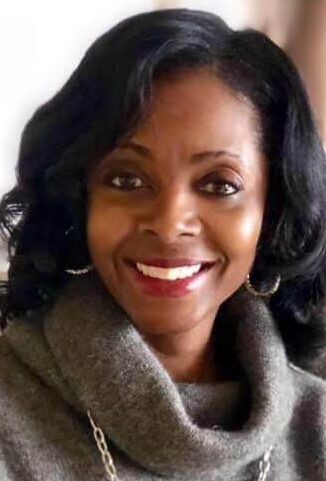 Over at CNN, Jennifer Thomas (pictured) was in her producer’s role. “I was the only Black producer at the time . . . I was the only Black female, then when I was promoted, I was the only Black producer for any of the news networks. You don’t think of the enormity of that. . . but you know that you bear a great responsibility. I don’t have a choice. I don’t have an opportunity to mess up. When they’re going around doing specials, no one’s coming to me, to ask me . . . I was there, but no one’s necessarily coming to me. . . but you’re doing your job and you’re doing it well, and then you recognize the significance of it later . . . “
Over at CNN, Jennifer Thomas (pictured) was in her producer’s role. “I was the only Black producer at the time . . . I was the only Black female, then when I was promoted, I was the only Black producer for any of the news networks. You don’t think of the enormity of that. . . but you know that you bear a great responsibility. I don’t have a choice. I don’t have an opportunity to mess up. When they’re going around doing specials, no one’s coming to me, to ask me . . . I was there, but no one’s necessarily coming to me. . . but you’re doing your job and you’re doing it well, and then you recognize the significance of it later . . . “
Ross, Alexander and Thomas were part of a panel Thursday called “Reporting While Black: Covering 9/11” sponsored by the Department of Media, Journalism and Film in Howard’s Cathy Hughes School of Communications.
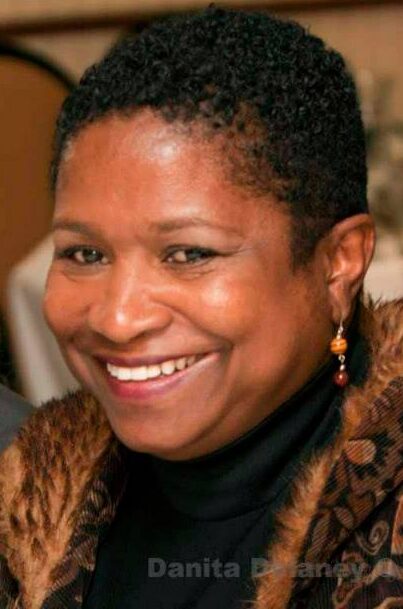 They were joined by Hazel Trice Edney (pictured), founder of the Trice Edney News Wire; independent journalist Clem Richardson, then a columnist at the Daily News in New York, and independent journalist Melanie Eversley, who reported from New York as a Washington correspondent for the Atlanta Journal-Constitution/Cox Newspapers. Yanick Rice Lamb of the Howard journalism faculty moderated.
They were joined by Hazel Trice Edney (pictured), founder of the Trice Edney News Wire; independent journalist Clem Richardson, then a columnist at the Daily News in New York, and independent journalist Melanie Eversley, who reported from New York as a Washington correspondent for the Atlanta Journal-Constitution/Cox Newspapers. Yanick Rice Lamb of the Howard journalism faculty moderated.
Elsewhere, other journalists of color were offering their perspectives on what 9/11 meant for the nation, the world and for themselves.
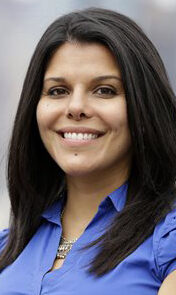 “What was also really striking was . . . I’m an Arab American, and I never really knew that until 9/11,” Vivian Salama (pictured), a national security reporter at The Wall Street Journal, said on PBS’ “Washington Week” Friday. “I’m a New Yorker, born and raised, and I never thought of myself as anything else. And suddenly I was a hyphen. My family members, relatives were all of a sudden getting criticized in public. For no reason, just because of their names or the way they look, and suddenly everything that I knew to be true about who I was seemed different . . . ”
“What was also really striking was . . . I’m an Arab American, and I never really knew that until 9/11,” Vivian Salama (pictured), a national security reporter at The Wall Street Journal, said on PBS’ “Washington Week” Friday. “I’m a New Yorker, born and raised, and I never thought of myself as anything else. And suddenly I was a hyphen. My family members, relatives were all of a sudden getting criticized in public. For no reason, just because of their names or the way they look, and suddenly everything that I knew to be true about who I was seemed different . . . ”
In 2001, Salama was a young producer in New York for NBC-TV’s owned-and-operated WNBC.
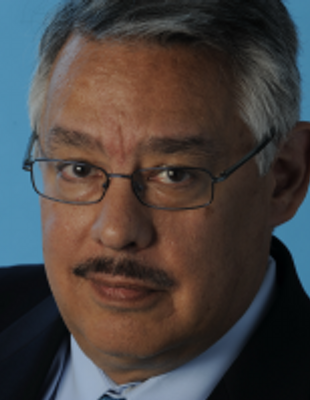 Juan Gonzalez (pictured), then a columnist for the Daily News in New York, was among the first to expose the public health and environmental crisis at Ground Zero. On “Democracy Now!,” which he co-hosts, Gonzalez said Tuesday that the intense backlash from the mayor’s office and federal officials “cowed” the newspaper, but he has no regrets. “My only mistake was believing that it would take 20 years for people to get sick. It took about five years for the deaths and the severe illnesses to really become apparent.”
Juan Gonzalez (pictured), then a columnist for the Daily News in New York, was among the first to expose the public health and environmental crisis at Ground Zero. On “Democracy Now!,” which he co-hosts, Gonzalez said Tuesday that the intense backlash from the mayor’s office and federal officials “cowed” the newspaper, but he has no regrets. “My only mistake was believing that it would take 20 years for people to get sick. It took about five years for the deaths and the severe illnesses to really become apparent.”
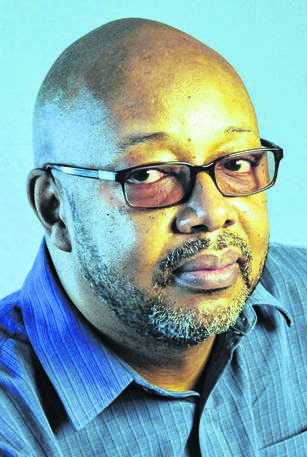 Leonard Pitts Jr. (pictured), syndicated columnist for the Miami Herald, won a Pulitzer Prize for commentary in 2004 after writing viscerally about the terrorist attacks in a widely circulated piece.
Leonard Pitts Jr. (pictured), syndicated columnist for the Miami Herald, won a Pulitzer Prize for commentary in 2004 after writing viscerally about the terrorist attacks in a widely circulated piece.
Pitts returned to the subject this week, writing, “That day tapped a deep seam of xenophobia and fear in the American psyche, making possible the election of a man who campaigned on ‘a total and complete shutdown of Muslims entering the United States’ — even as white nationalist terror cells were training in the woods. Before Sept. 11, Trump’s presidency — and the myriad catastrophes proceeding from it — would have seemed the stuff of some bizarre, outlandish fiction.
“But we have become a nation of truths stranger than fiction, a nation where satire must run to keep up with reality. As we go forward from this moment, we find ourselves contending for the very soul of America — something none of us could have imagined 20 years ago. Which is why it must be said, tragically, that the terrorists succeeded beyond their dreams in inflicting damage on this country.”
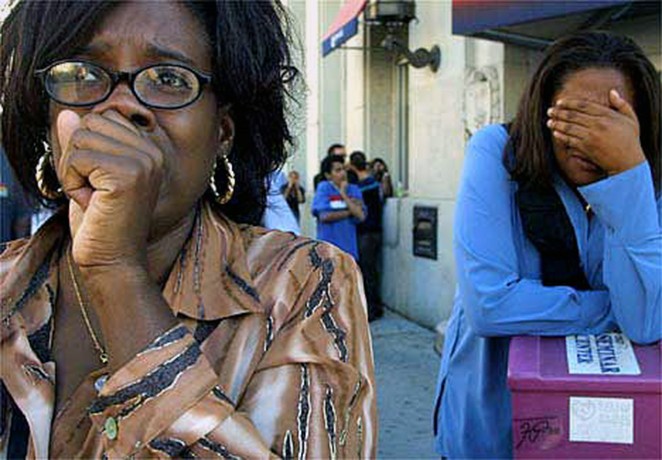
The testimony of the Howard panelists on their responses as Black journalists stood out for those in the profession or studying to be.
“Most of that day was a challenge for me,” Ross explained. “I said, I am going to outperform, I am going to perform beyond the level that’s expected. As it was, that particular trip for the president had been declared a news-free zone, and treated like a ‘scrub trip,’ what they call a ‘scrub trip.’
“You know, there was supposed to be a big economic address by the president the following week,” so most were preparing themselves for that moment. “And they treated this trip like it’s a nothing trip to Florida. So ‘put a secondary person on that, because you’re needed for this bigger thing later.’ “
Ross continued, “I wasn’t about to let anybody say that that Black girl didn’t do that job that day, that I didn’t make the first use of this pool the best of its magnitude, you know.
“I reported absolutely everything. I nailed down everything, even if it was just the timeline. What time was it when such-and-such happened? I made sure I knew the answer to that question. And I made sure that I could sneak and turn my cell phone back on whenever I could . . . and pick up information. I made sure I had a question anytime anybody came back into the press cabin on Air Force One. . . . . questions that, honestly, people did not have an answer for, but it wasn’t going to be for lack of a question. I had to make sure that they understood that they would have to find an answer for me before I would sit there with absolutely nothing to say.
“I bring that up because it does bother me a bit when I watch journalists of today, and so many don’t seem to have a question, and that should not be. I had to set my emotions aside, I had to set any concerns that I had aside, all the talk about surface-to-air missiles hitting the plane, and it might take us down, and it would just be ‘President Bush and 15 others perished,’ and I’d be in the 15 others, but I was going to go down in ‘the 15 others’ asking the questions and doing my job.”
Edney was working then under the late George Curry, long affiliated with the National Newspaper Publishers Association News Service, who wanted Edney to find a Black person to interview. She talked with a custodian who was in the kitchen at the Pentagon. He went outside and went back in to get permission to leave. Edney had just returned from South Africa, and she related the custodian’s story to that experience. The newspaper The Sowetan carried a cartoon about the United States’ reluctance to attend the World Conference Against Racism, Racial Discrimination, Xenophobia and Related Intolerance. Colin Powell, then secretary of state, is portrayed saying to Bush, “Massa, can I go?”
“It’s so crucial to put faces, human faces, onto any tragedy,” Edney said. “But, specifically, because we are so often left out, stories of Black people are always going to be important because they are the ones who need to be comforted. Remember, ‘afflict the comfortable and comfort the afflicted’? We are the ones who are so often the afflicted . . . we were all under attack that day, but the ones who got the least attention, etc., etc., is usually us.”
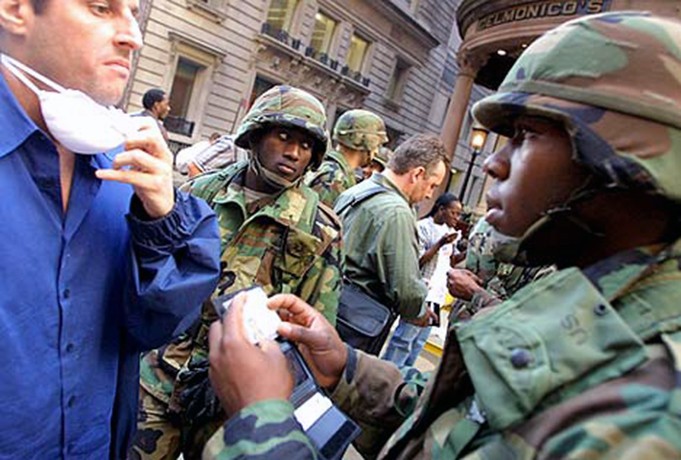
The panelists were asked what advice they would give students and their own peers.
Alexander urged becoming an expert on a topic. Richardson said to ask more experienced reporters how they do what they do.
Ross said, “There are two things that will make you golden, beyond asking questions. . . . The first is follow up. . . . When you pitch your stories, give ’em the story. Don’t just give the idea, give them the story. They’re more likely to accept what you offer if you can give ’em a whole story or as close to a whole story as possible. So, do those things: Follow up, and when you pitch a story, have that story. Don’t ask for permission, say ‘can I do this story?’ and then go out to do the story. Have that story reported by the time you tell somebody you want to do it. I did that often and it worked.”
Edney responded, “I must say that we must take care of ourselves. I think that’s one thing that’s come out of this conversation. I happen to also be an ordained minister, so that has helped me; my prayer life has helped me through these moments. These great moments when, like I say, I was called the N-word to my face. Having to cover an electrocution and all that kind of stuff, and everything from a Black perspective, can be very, very painful.
“And so, whatever it takes for you, then do that thing. You know, take a weekend vacation. Make sure that you’re resting your mind, because the editors will be like, go-go-go, and like, 20 years later, like now, I’m feeling sensations that I never felt before, from just this night of remembrance. . . . “
- Spencer Ackerman, New York Times: How Sept. 11 Gave Us Jan. 6
- Hannan Adely and Danielle Parhizkaran, NorthJersey.com: ‘Breaking stereotypes’: How 9/11 shaped a generation of Muslim Americans
- Frasat Ahmad, Buffalo News: Real Muslims work to give and promote life
- Meher Ahmad, New York Times: To Be Young, American and Muslim after 9/11
- Scott Bixby, Daily Beast: How Oprah Helped Joe Biden Speak to the Nation After 9/11
- Charles M. Blow, New York Times: Our Children Will Never Know the Innocence We Knew
- Louis Chan, AsAmNews: South Asian Americans reflect on 9/11 20 years later
- Sewell Chan, Los Angeles Times: A young reporter’s 9/11
- Wayne Dawkins, Afro: On 20th anniversary of 9/11, remember storytellers
- Elizabeth Dias, New York Times: Muslim Americans’ ‘Seismic Change’
- Cherri Gregg, WHYY, Philadelphia: Black woman photographer captures 9/11 from ‘Blocks Away’
- Emil Guillermo, Asian American Legal Defense and Education Fund: On Vax Americana and 9/11– Getting the vaccine out and getting to be one country again
- Nicole Hallingstad, indianz.com: New York Native: A 9/11 Indigenous Remembrance
- Roy S. Johnson, al.com: Political sniping in wake of Afghanistan terror dishonors all who died there and 9/11 victims
- A.J. Katz with Amna Nawaz, Jorge Ramos and others, TVNewser: #AskNewser: How Did 9/11 Change the Course of Your Career in TV News?
- Tom Junod, Esquire: The Falling Man: An unforgettable story. (His name was Norberto Hernandez)
- Colbert I. King, Washington Post: Since 9/11, most terrorism in this country has been made in the USA
- Latino USA: 9/11’s Immigration Legacy (podcast)
- Cat McKenzie, WABC-TV, New York: Cat McKenzie reflects on 9/11 (Sept. 11, 2009)
- Shereen Marison Meraji, “Code Switch,” NPR: When Should We Label Something ‘Terrorism’?
- Bill Mitchell, Poynter Institute: How 9/11 changed Poynter (and journalism)
- Besheer Mohamed, Pew Research Center: Muslims are a growing presence in U.S., but still face negative views from the public
- Askia Muhammad, Washington Informer: 9/11 Until Now — White Americans Don’t Want Peace
- National Geographic: 9/11: One Day in America (videos)
- David Ng, The Providence Journal: ‘Dad’s missing.’ Two words that shape my 9/11 memories as I watched the towers burn
- Tony Norman, Pittsburgh Post-Gazette: Looking back at 9/11 in anger and in sorrow
- Clarence Page, Chicago Tribune: What have we learned about ourselves since 9/11? Not enough
- April Ryan, the Grio: What was it like being a Black White House reporter with Bush on 9/11?
- Alicia Shepard, Freedom Forum: On 9/11, Journalists Ran Toward Danger
- Will Sutton, NOLA.com: The morning of 9/11, I was focused on Michael Jordan. Then America was struck.
- Claudia Torrens, Associated Press: Immigrant September 11 Cleanup Crews Seek Residency as a Reward
- Meena Venkataramanan, Los Angeles Times: How 9/11 stalled immigration reform — and inspired a new generation of activists
- Beverly White, KNBC-TV, Los Angeles: American Muslim Remembers Life After 9/11
The entire @NABJ family is sending prayers to the family, friends and loved ones in the loss of revered longtime anchor, Allison Payne. She touched so many in Chicago. ?️ | @NABJCC https://t.co/TNMCSRuait pic.twitter.com/UhJLFRs9FA
— Dorothy Tucker NABJ (@Dorothy4NABJ) September 11, 2021
Allison Payne, Chicago Anchor, Dies at 57
“Allison Payne, the longtime TV news reporter anchor for Chicago’s WGN, died on September 1 at age 57, WGN reported,” Thom Geier wrote Saturday for the Daily Beast.
“The Detroit native joined WGN in 1990 at the age of 25 and established herself quickly on major stories. She traveled to Kenya to trace the family roots of then-Senator Barack Obama and joined the Rev. Jesse Jackson on a trip to Ivory Coast.
“During her 21 years at WGN, she won nine Emmys and co-anchored both the station’s primetime newscast as well as the midday news show.
“She also suffered a series of health issues over the years, taking a medical leave of absence in 2008 after a series of mini-strokes as well as bouts of depression. ‘It was brutal getting out of the house, I couldn’t get out of bed,’ Payne told the Chicago Tribune.
“Payne parted ways with WGN in September 2011 to return to Detroit.
“Tributes quickly poured in for Payne. . . .”
Bill Church, Japanese American, Named in Raleigh
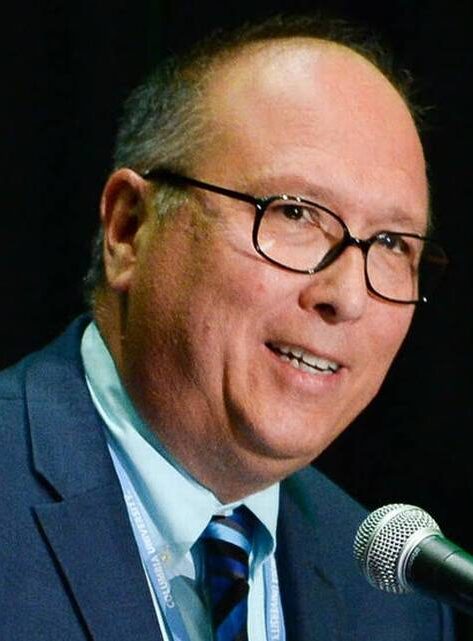 “Bill Church (pictured), who started his newspaper career covering high school sports for an Oklahoma weekly and most recently helped oversee 150 newsrooms across the nation, will be the new executive editor of The News & Observer and The Herald-Sun,” Martha Quillin reported Friday for The News & Observer in Raleigh, N.C. The Herald-Sun is in neighboring Durham.
“Bill Church (pictured), who started his newspaper career covering high school sports for an Oklahoma weekly and most recently helped oversee 150 newsrooms across the nation, will be the new executive editor of The News & Observer and The Herald-Sun,” Martha Quillin reported Friday for The News & Observer in Raleigh, N.C. The Herald-Sun is in neighboring Durham.
“Robyn Tomlin, vice president of local news for McClatchy, announced Church’s hire Friday.
“ ‘His unique mix of skills, experience and talents make him the perfect person to take the lead of these news organizations at this moment of growth and opportunity in our newsroom and community’ said Tomlin, who served as the N&O’s executive editor as well as Southeast regional editor for McClatchy before her recent promotion.
“Church is a Japanese-American, born on an Air Force base in Japan while his father was serving overseas. He will be the first person of color to serve in the newsroom’s top leadership role in The News & Observer’s 156-year history. . . .
“Church is a longtime member of the Asian American Journalists Association and is a recipient of the News Leaders Association’s Robert G. McGruder Award for Diversity Leadership.
“After GateHouse merged with Gannett in 2019, Church took on the role of vice president of news and director of standards and staff development with Gannett until his departure last fall. . . .”
Church is the latest editor of color to be appointed at McClatchy.
Sharif Durhams, who is African American and president of NLGJA: The Association of LGBTQ Journalists, was named managing editor at The News & Observer and The Herald-Sun in December.
Rana Cash, executive editor of the Savannah (Ga.) Morning News and a Black journalist, was named executive editor of the Charlotte Observer in August.
Monica R. Richardson, a Black journalist who was senior managing editor of the Atlanta Journal-Constitution, was named executive editor of The Miami Herald in December.
Justin M. Madden, another Black journalist, was named senior editor/general manager of the Sun News in Myrtle Beach, S.C., in September.
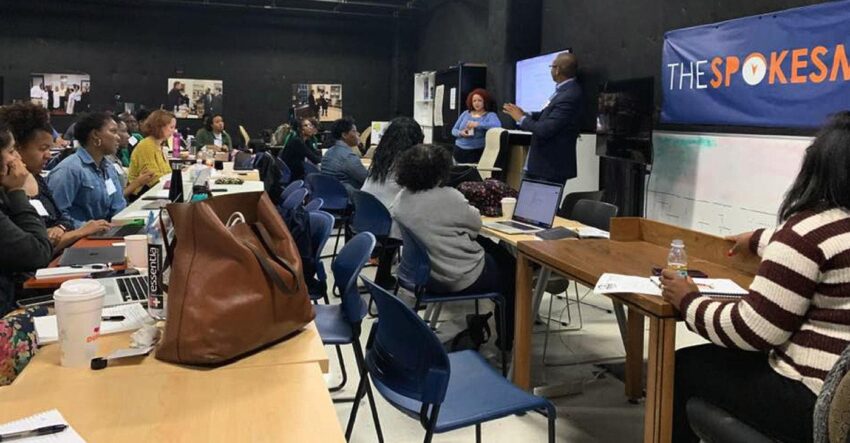
Ida B. Wells Society Aims to Boost J-Pipeline
The Ida B. Wells Society for Investigative Reporting outlined Thursday how it plans to use a $1 million grant from the Black Community Commitment announced in May by basketball legend Michael Jordan and the Jordan Brand.
“With the help of the Black Community Commitment grant, the Society intends to expand its existing internship program for college students and recent college graduates, partnering budding talent with major news organizations like The New York Times, the Miami Herald, ProPublica, the Associated Press and the USA Today Network around the United States,” the society said.
“The Society also plans to launch an All-Star Investigative Summer J-Camp, starting in July of 2022, that will bring students from majority-Black and Latino and historically disadvantaged schools together for an immersive, multidisciplinary training program in partnership with an historically Black college.
“This fall, the Society will also launch a yearlong high school journalism class ‘adoption’ project. With assistance from the North Carolina Scholastic Media Association, the Society will partner with a journalism class at a majority Black and Latino public high school in Durham, North Carolina. The Society will bring in top-level investigative reporters from the Triangle area and from around the country to Durham to provide ongoing mentorship and coaching throughout the year as students work on long-term investigative projects. . . .”
Slow Progress on Broadcast Ownership
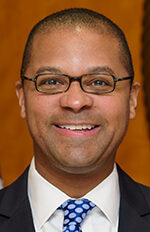 “The FCC has released its fifth report on broadcast ownership, according to FCC Commissioner Geoffrey Starks (pictured) and there is some slight improvement in the number of women and minority-owned stations, but the emphasis is on the ‘slight,‘ ” John Eggerton reported Thursday for nexttv.com.
“The FCC has released its fifth report on broadcast ownership, according to FCC Commissioner Geoffrey Starks (pictured) and there is some slight improvement in the number of women and minority-owned stations, but the emphasis is on the ‘slight,‘ ” John Eggerton reported Thursday for nexttv.com.
Starks said in his statement:
“Although the numbers show some slight improvements in majority ownership of full power commercial broadcast television stations by African Americans (up from 12 in 2017 to 18 stations in 2019), the percentage of ownership still rounds to an anemic 1%. Moreover, that number significantly worsened for Asian American owners (from 9 full power TV stations in 2017 to four stations in 2019).
“Women had majority ownership in four more full power TV stations in 2019 (77) than in 2017, but that is still only 5.6% of 1,369 total stations, far below their representation in our overall population. The numbers don’t lie – we must ensure that ownership at broadcast stations better reflects the rich diversity of the communities that they serve.
“We still have work to do, and we have to do better. That is why I strongly support initiatives like Congressman G.K. Butterfield’s renewed efforts to increase opportunities for diversity in broadcast ownership and viewpoints by reintroducing H.R. 4871, the Expanding Broadcast Opportunities Act of 2021, which would promote diversity of ownership in the broadcast industry by reestablishing the FCC’s Minority Tax Certificate Program.“
DuJuan McCoy Expands Reach of Indy TV Station
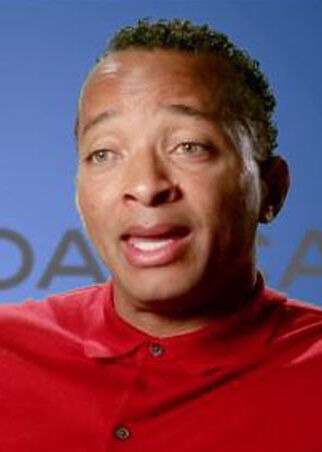 “DuJuan McCoy (pictured) owner, president, and CEO of Circle City Broadcasting, and Gregory Phipps, president of Metro Video Productions, today announced an agreement to broadcast Circle City’s CW affiliate WISH Indianapolis (News 8) news live in the Fort Wayne, Ind. (DMA 111), on Metro Video’s WLMO-LD,” TVNewsCheck reported Tuesday.
“DuJuan McCoy (pictured) owner, president, and CEO of Circle City Broadcasting, and Gregory Phipps, president of Metro Video Productions, today announced an agreement to broadcast Circle City’s CW affiliate WISH Indianapolis (News 8) news live in the Fort Wayne, Ind. (DMA 111), on Metro Video’s WLMO-LD,” TVNewsCheck reported Tuesday.
“WLMO will carry more than 80 weekly hours of News 8 broadcasts in the Fort Wayne and Northeast Indiana region. The expansion will bring WISH-TV’s News 8 to more than 800,000 Hoosiers in 11 counties: Adams, Allen, DeKalb, Huntington, Kosciusko, LaGrange, Noble, Steuben, Wabash, Wells and Whitley.
“ ‘This is a continuation of my goal to bring the quality and legacy of WISH-TV’s News 8 from the capital city of Indianapolis to all television markets in the state of Indiana,’ said McCoy, an Indianapolis native and graduate of Butler University. ‘There are still an estimated 405,000 Hoosiers that currently receive their local news from non-Indiana television stations including 16 counties in Southeast Indiana (Cincinnati and Louisville DMAs), and we are working toward closing that gap soon.’ . . . ”
There will be many poignant essays on Michael K. Williams’ brilliance. But I’ll say now, I loved his ability to explore issues facing Black men while bringing dignity and intelligence to characters usually written off in film/TV. Rest In Power, brother. https://t.co/pYtJuvk22d
— Eric Deggans at NPR (@Deggans) September 6, 2021
Death of Michael K. Williams Inspires Tributes
The death of actor Michael K. Williams struck such a chord with journalists that he earned an editorial from the Pittsburgh Post-Gazette, though there was no obvious local angle. It began:
“ ‘Man’s gotta earn a living’ — Michael K. Williams as Omar Little on ‘The Wire.’
“That consensus didn’t come about because Mr. Williams took on a range of roles like Robert De Niro or Tom Hanks. He wasn’t a chameleon. One might lament, as Mr. Williams often did, that he was usually offered roles that seemed to confirm his gift for playing outsiders, gangsters, hoodlums, desperate men — whatever scary American archetype was required by directors eager to tap into his charisma for their own purposes.
“Though ambivalent about being typecast as an urban antihero, no one was better at portraying such a fearsome mix of eloquence, charm, hilarity and urban menace. Instead of bemoaning his fate, Michael K. Williams gave what could’ve been tedious stereotypes the dignity of distinctive voices. . . .”
- Rhett Butler, Shadow League: R.I.P. Michael K. Williams | Transcendence From The Screen To The Street
- Lamar Dawson, NBC News: Gay Black men rarely saw themselves on screen. Michael K. Williams changed that.
- David Dennis Jr., the Undefeated: What Michael K. Williams taught me about being a man
- Reneé Graham, Boston Globe: Losing too many Black men too soon
- LZ Granderson, Los Angeles Times: Michael K. Williams used Omar on ‘The Wire’ to revive a Black, queer identity
- Peniel E. Joseph, CNN: Michael K. Williams made queer Black masculinity iconic
- Julian Kimble, GQ: Michael K. Williams Was a Beacon for Lost Souls
- Marc H. Morial, National Urban League: Michael K. Williams’ Death Underscores the Need for “Antiracist Public Health Approach” to Substance Abuse
- Doreen St. Félix, New Yorker: Remembering Michael K. Williams, a Defender of Black Fictions
- Akiba Solomon, Slate: Michael K. Williams Was Something Different
Taliban Violently Attacking Journalists
“A spate of violent attacks on Afghan journalists by the Taliban is prompting growing alarm over the freedom of the country’s media, with one senior journalist declaring that ‘press freedom has ended‘,” Emma Graham-Harrison and Peter Beaumont reported Thursday for The Guardian.
“As images and testimony circulated internationally of the arrest and brutal flogging of two reporters who were detained covering a women’s rights demonstration in Kabul on Wednesday, Human Rights Watch and the Committee to Protect Journalists raised concern over the recent string of attacks.
“In just two days this week, the Taliban detained and later released at least 14 journalists covering protests in Kabul, with at least six of these journalists subject to violence during their arrests or detention, the CPJ reported.
“Other journalists, including some working with the BBC, were also prevented from filming the protest on Wednesday.
“The Taliban authorities also briefly detained a Tolonews photojournalist, Wahid Ahmadi, on Tuesday, confiscating his camera and preventing other journalists from filming the protest he was covering.
“The renewed threats against the media have coincided with the announcement by the new Taliban interior ministry that it was banning unauthorised protests. . . .”
- Rekha Basu, Des Moines Register: Occupying Afghanistan was a 20-year mistake. Now we must lend support and asylum to its vulnerable.
- Julian Borger, the Guardian: The Afghanistan Papers review: superb exposé of a war built on lies
- Kathy Gannon, Associated Press: UN raises alarm on Taliban crackdown on dissent, journalists
- Matt Gertz, Media Matters for America: The press deprioritized Afghanistan coverage for years. The failed war’s architects benefited the most. (Sept. 2)
- Emil Guillermo, Asian American Legal Defense and Education Fund: It’s “L.A. Day”–“Losing Afghanistan Day” in America (Aug. 31)
- Sharif Hassan, New York Times: ‘Everything Changed Overnight’: Afghan Reporters Face an Intolerant Regime
- International Federation of Journalists: Afghanistan: Journalist leader Fahim Dashti killed in Taliban attack in Panjshir Valley
- Ruben Navarrette Jr., Washington Post Writers Group: The least Americans can do to honor our fallen troops is tell the truth
- Pulitzer Prizes: Afghanistan: A Pulitzer View (Aug. 28)
- Reporters Without Borders: Are the Taliban now showing their true face to journalists?
- Fabiola Santiago, Miami Herald: I see you, Afghan girl. I was once that little one on a freedom flight to America
- Michael Shaw, Columbia Journalism Review: The images that tell the true story of the war in Afghanistan
Nominate a J-Educator Who Promotes Diversity
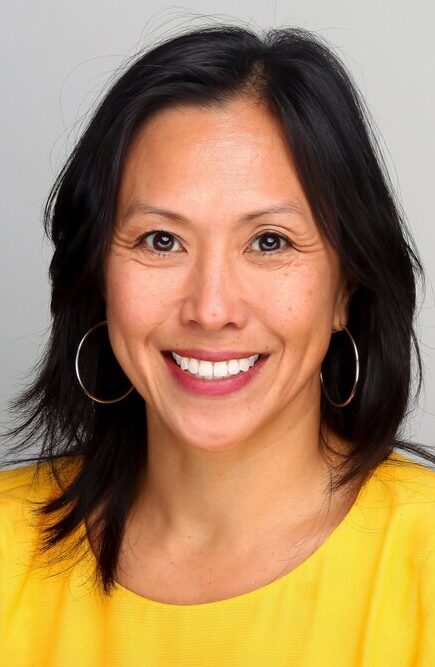
Mei-Ling Hopgood, 2020 recipient
Beginning in 1990, the Association of Opinion Journalists, now part of the News Leaders Association, annually granted a Barry Bingham Sr. Fellowship — actually an award — “in recognition of an educator’s outstanding efforts to encourage minority students in the field of journalism.”
Since 2000, the recipient has been awarded an honorarium of $1,000 to be used to “further work in progress or begin a new project.”
Past winners include James Hawkins, Florida A&M University (1990); Larry Kaggwa, Howard University (1992); Ben Holman, University of Maryland (1996); Linda Jones, Roosevelt University, Chicago (1998); Ramon Chavez, University of Colorado, Boulder (1999); Erna Smith, San Francisco State (2000); Joseph Selden, Penn State University (2001); Cheryl Smith, Paul Quinn College (2002); Rose Richard, Marquette University (2003).
Also, Leara D. Rhodes, University of Georgia (2004); Denny McAuliffe, University of Montana (2005); Pearl Stewart, Black College Wire (2006); Valerie White, Florida A&M University (2007); Phillip Dixon, Howard University (2008); Bruce DePyssler, North Carolina Central University (2009); Sree Sreenivasan, Columbia University (2010); Yvonne Latty, New York University (2011); Michelle Johnson, Boston University (2012); Vanessa Shelton, University of Iowa (2013); William Drummond, University of California at Berkeley (2014); Julian Rodriguez of the University of Texas at Arlington (2015) (video); David G. Armstrong, Georgia State University (2016) (video); Gerald Jordan, University of Arkansas (2017), Bill Celis, University of Southern California (2018); Laura Castañeda, University of Southern California (2019); and Mei-Ling Hopgood, Northwestern University (pictured) (2020).
Nominations may be emailed to Richard Prince, Opinion Journalism Committee, richardprince (at) hotmail.com. The deadline is Oct. 15. Please use that address only for NLA matters.
Short Takes
 “As Hurricane Ida neared landfall in Louisiana on Sunday, WLOX reporter Andrés Fuentes (pictured) was tweeting updates in two languages,” Isabelle Taft reported Sept. 2 for the Sun Herald in Gulfport, Miss. ” ‘La tormenta se está acelerando muy rápidamente,’ he wrote. ‘Ha llegado el momento de volver a casa. The storm is picking up very quickly. It’s time now to head home.’ As far as he knows, Fuentes, a New Orleans native, is the only journalist in all of South Mississippi who is fluent in Spanish. The information he delivers, along with Spanish-language media companies in Louisiana and Alabama, could save lives in a region where the Hispanic population is growing quickly, but where state and local governments provide few to no real-time disaster updates in Spanish. . . .”
“As Hurricane Ida neared landfall in Louisiana on Sunday, WLOX reporter Andrés Fuentes (pictured) was tweeting updates in two languages,” Isabelle Taft reported Sept. 2 for the Sun Herald in Gulfport, Miss. ” ‘La tormenta se está acelerando muy rápidamente,’ he wrote. ‘Ha llegado el momento de volver a casa. The storm is picking up very quickly. It’s time now to head home.’ As far as he knows, Fuentes, a New Orleans native, is the only journalist in all of South Mississippi who is fluent in Spanish. The information he delivers, along with Spanish-language media companies in Louisiana and Alabama, could save lives in a region where the Hispanic population is growing quickly, but where state and local governments provide few to no real-time disaster updates in Spanish. . . .”
- “A 39-year-old woman identified as Sonya testified in R. Kelly’s sex-crimes trial Thursday that she had been sexually abused by him when she was a radio station intern seeking an interview in 2003,” Haven Orecchio-Egresitz reported Thursday for Insider. “The accuser said she had met Kelly — whose real name is Robert Sylvester Kelly — at a mall in Salt Lake City and hoped to get an interview with him, but was denied the initial opportunity. Instead she was given his number, and after a few conversations was invited to his studio in Chicago where she hoped to land the interview. . . .”
 Neal Scarbrough (pictured), the veteran sports journalist who has been vice president and executive editor at Fox Sports since 2016. has been hired by Marketplace, the business news franchise distributed by American Public Media. He will be its new vice president and general manager. “Scarbrough will oversee a team of broadcast and digital journalists, editors and producers across radio and on demand in Los Angeles, New York, Washington, London and Shanghai,” Marketplace announced Thursday.
Neal Scarbrough (pictured), the veteran sports journalist who has been vice president and executive editor at Fox Sports since 2016. has been hired by Marketplace, the business news franchise distributed by American Public Media. He will be its new vice president and general manager. “Scarbrough will oversee a team of broadcast and digital journalists, editors and producers across radio and on demand in Los Angeles, New York, Washington, London and Shanghai,” Marketplace announced Thursday.
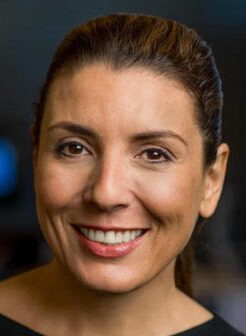 “Lulu Garcia-Navarro (pictured), host of NPR’s Weekend Edition Sunday and a co-host of its morning news podcast Up First, announced Thursday on Twitter that she will leave the network, Tyler Falk reported for Current. “An NPR spokesperson confirmed that Garcia-Navarro’s last day hosting Weekend Edition will be Oct. 17. NPR will conduct a national search for her replacement. Garcia-Navarro wrote in her Twitter announcement that ‘it is time to say goodbye. Like much of the US, I need a break!’ “
“Lulu Garcia-Navarro (pictured), host of NPR’s Weekend Edition Sunday and a co-host of its morning news podcast Up First, announced Thursday on Twitter that she will leave the network, Tyler Falk reported for Current. “An NPR spokesperson confirmed that Garcia-Navarro’s last day hosting Weekend Edition will be Oct. 17. NPR will conduct a national search for her replacement. Garcia-Navarro wrote in her Twitter announcement that ‘it is time to say goodbye. Like much of the US, I need a break!’ “
- Tiffany Wu, most recently Reuters’s global managing editor for curation, editing and publishing, overseeing the relaunch of Reuters.com and a push into professional audiences, is being promoted to global managing editor for business news, Reuters announced on Wednesday.
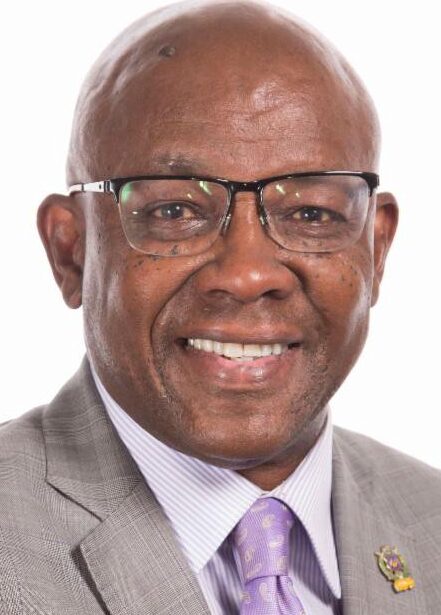 Garry D. Howard (pictured) director of corporate initiatives for American City Business Journals, will receive the 2021 Lawrence Minard Editor Award, the G. and R. Loeb Foundation Inc. and UCLA Anderson School of Management announced Tuesday. “The Minard Editor Award was named in memory of Lawrence ‘Laury’ Minard, founding editor of Forbes Global and a former final judge for the Loeb Awards. This award honors excellence in business, financial and economic journalism editing and recognizes an editor whose work does not often receive public recognition. . . .”
Garry D. Howard (pictured) director of corporate initiatives for American City Business Journals, will receive the 2021 Lawrence Minard Editor Award, the G. and R. Loeb Foundation Inc. and UCLA Anderson School of Management announced Tuesday. “The Minard Editor Award was named in memory of Lawrence ‘Laury’ Minard, founding editor of Forbes Global and a former final judge for the Loeb Awards. This award honors excellence in business, financial and economic journalism editing and recognizes an editor whose work does not often receive public recognition. . . .”
- “Morgan State University President David Wilson is a 2021 inductee into The Baltimore Sun’s Business and Civic Hall of Fame,” the Sun announced Friday. “Wilson has no shortage of accomplishments that he can rightfully be proud of at the institution he has led since 2010. There’s the procurement of the university’s largest-ever research contract, a $28.5-million, five-year contract from NASA. There’s the internationally known and accredited School of Global Journalism and Communication he created in 2013. . . .”
- “Political scientists have been saying for at least a decade that the world is in a ‘democratic recession,’ because growing numbers of countries are becoming autocracies,” Andrés Oppenheimer wrote Friday for The Miami Herald. “But in Latin America, it’s getting even worse — we may already be in a ‘democratic depression.’ I have never seen as many Latin American countries descending to autocratic rule since the military dictatorships of the 1970s. . . .”
- “Spain’s state television on Friday condemned a racist comment made by a guest sports commentator during the presentation of Real Madrid player Eduardo Camavinga,” the Associated Press reported. “During Wednesday’s presentation of Camavinga, analyst Lorena González was heard off camera saying ‘this guy is blacker than his suit.’ The 18-year-old Camavinga, a French player born in Angola, is Black. . . .”
- In Kenya,” we reviewed evidence of a booming, shadowy industry of social media influencers for political hire in Kenya,“ Odanga Madung wrote Wednesday for Wired. “Members of civil society and journalists alike have increasingly come under disinformation attacks that seek to silence them, muddy their reputations, and stifle their reach. . . . The three most frequent types of victims of these campaigns, our analysis found, were Kenyan journalists, judges, and activists. . . . In total, we flagged 23,606 tweets and retweets released by 3,742 accounts under . . . 11 hashtags. . . . There is money to be made. Our sources said that they get paid between $10 and $15 to participate in three campaigns per day. Others are on a retainer that can go as high as $250 a month. This is in a country where many citizens earn $1 a day. . . .”
- Journal-isms is renewing its search for an assistant editor who would love to help produce this column. Position is part time, 15 to 20 hours weekly. Please see the “About” section of this website for more information.
To subscribe at no cost, please send an email to journal-isms+subscribe@groups.io and say who you are.
Facebook users: “Like” “Richard Prince’s Journal-isms” on Facebook.
Follow Richard Prince on Twitter @princeeditor
Richard Prince’s Journal-isms originates from Washington. It began in print before most of us knew what the internet was, and it would like to be referred to as a “column.” Any views expressed in the column are those of the person or organization quoted and not those of any other entity. Send tips, comments and concerns to Richard Prince at journal-isms+owner@
View previous columns (after Feb. 13, 2016).
View previous columns (before Feb. 13, 2016)
- Diversity’s Greatest Hits, 2018 (Jan. 4, 2019)
- Book Notes: Is Taking a Knee Really All That? (Dec. 20, 2018)
- Book Notes: Challenging ’45’ and Proudly Telling the Story (Dec. 18, 2018)
- Book Notes: Get Down With the Legends! (Dec. 11, 2018)
- Journalist Richard Prince w/Joe Madison (Sirius XM, April 18, 2018) (podcast)
- Richard Prince (journalist) (Wikipedia entry)
- February 2018 Podcast: Richard “Dick” Prince on the need for newsroom diversity (Gabriel Greschler, Student Press Law Center, Feb. 26, 2018)
- Diversity’s Greatest Hits, 2017 — Where Will They Take Us in the Year Ahead?
- Book Notes: Best Sellers, Uncovered Treasures, Overlooked History (Dec. 19, 2017)
- An advocate for diversity in the media is still pressing for representation, (Courtland Milloy, Washington Post, Nov. 28, 2017)
- Morgan Global Journalism Review: Journal-isms Journeys On (Aug. 31, 2017)
- Diversity’s Greatest Hits, 2016
- Book Notes: 16 Writers Dish About ‘Chelle,’ the First Lady
- Book Notes: From Coretta to Barack, and in Search of the Godfather
- Journal-isms’ Richard Prince Wants Your Ideas (FishbowlDC, Feb. 26, 2016)
- “JOURNAL-ISMS” IS LATEST TO BEAR BRUNT OF INDUSTRY’S ECONOMIC WOES (Feb. 19, 2016)
- Richard Prince with Charlayne Hunter-Gault,“PBS NewsHour,” “What stagnant diversity means for America’s newsrooms” (Dec. 15, 2015)
- Book Notes: Journalists Follow Their Passions
- Book Notes: Journalists Who Rocked Their World
- Book Notes: Hands Up! Read This!
- Book Notes: New Cosby Bio Looks Like a Best-Seller
- Journo-diversity advocate turns attention to Ezra Klein project (Erik Wemple, Washington Post, March 5, 2014)
When you shop @AmazonSmile, Amazon will make a donation to Journal-Isms Inc. https://t.co/OFkE3Gu0eK
— Richard Prince (@princeeditor) March 16, 2018

